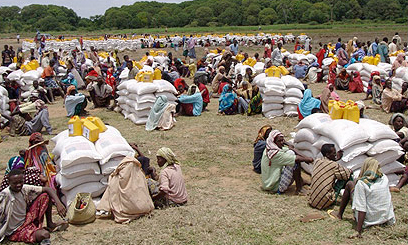GENEVA, Jul 19 – The death rate among drought-stricken Somalis arriving at refugee camps has reached several times above levels seen in emergency situations, the UN refugees agency said Tuesday.
“The situation in Dolo Ado is very dire,” said the UNHCR’s chief of public health section, Paul Spiegel, referring to the Ethiopian refugee camp where thousands of Somali refugees have sought shelter in recent weeks.
Mortality rate in June reached 7.4 deaths per 10,000 a day, sharply above the sub-Saharan baseline rate of 0.5 and the emergency situation of above one death.
“It’s 15 times the baseline and the preponderance of the deaths are among under-five children,” said Spiegel, adding that death rates for young children are generally over twice that of the overall population.
The United States Tuesday urged Somalia’s Shebab rebels to let humanitarian workers operate unhindered, saying that the Al-Qaeda-inspired movement was a major reason for the country’s hunger crisis.
The Shebab expelled foreign aid groups two years ago, accusing them of being Western spies and Christian crusaders. But the group recently said it would allow in relief, faced with the Horn of Africa’s worst food crisis in years.
“Al-Shebab’s activities have clearly made the current situation much worse,” Johnnie Carson, US assistant secretary of state for African affairs, told reporters.
“We call on all of those in south-central Somalia who have it within their authority to allow refugee groups and organizations to operate there to do so,” he said.
A famine is generally declared when the mortality rate reaches over two deaths per 10,000 person per day, and when wasting of above 30 percent occurs across an entire region, according to UN criteria.
UN High Commissioner for Refugees spokesman Adrian Edwards stressed that the criteria had to be fulfilled across a region, whereas UNHCR data reflected only the situation of refugees arriving in the camps.
Beyond mortality rates, Spiegel also cited “extremely rare and very high” malnutrition data.
The severe acute malnutrition rate reached 26.8 percent in June, while the baseline rate should be below 1.0 percent.
However, there were signs that the situation was improving on this front, with preliminary data in July indicating a drop in the severe acute malnutrition rate.
This could be because Somalis have heard about aid in camps, and are therefore leaving their homeland earlier, Spiegel explained.









































